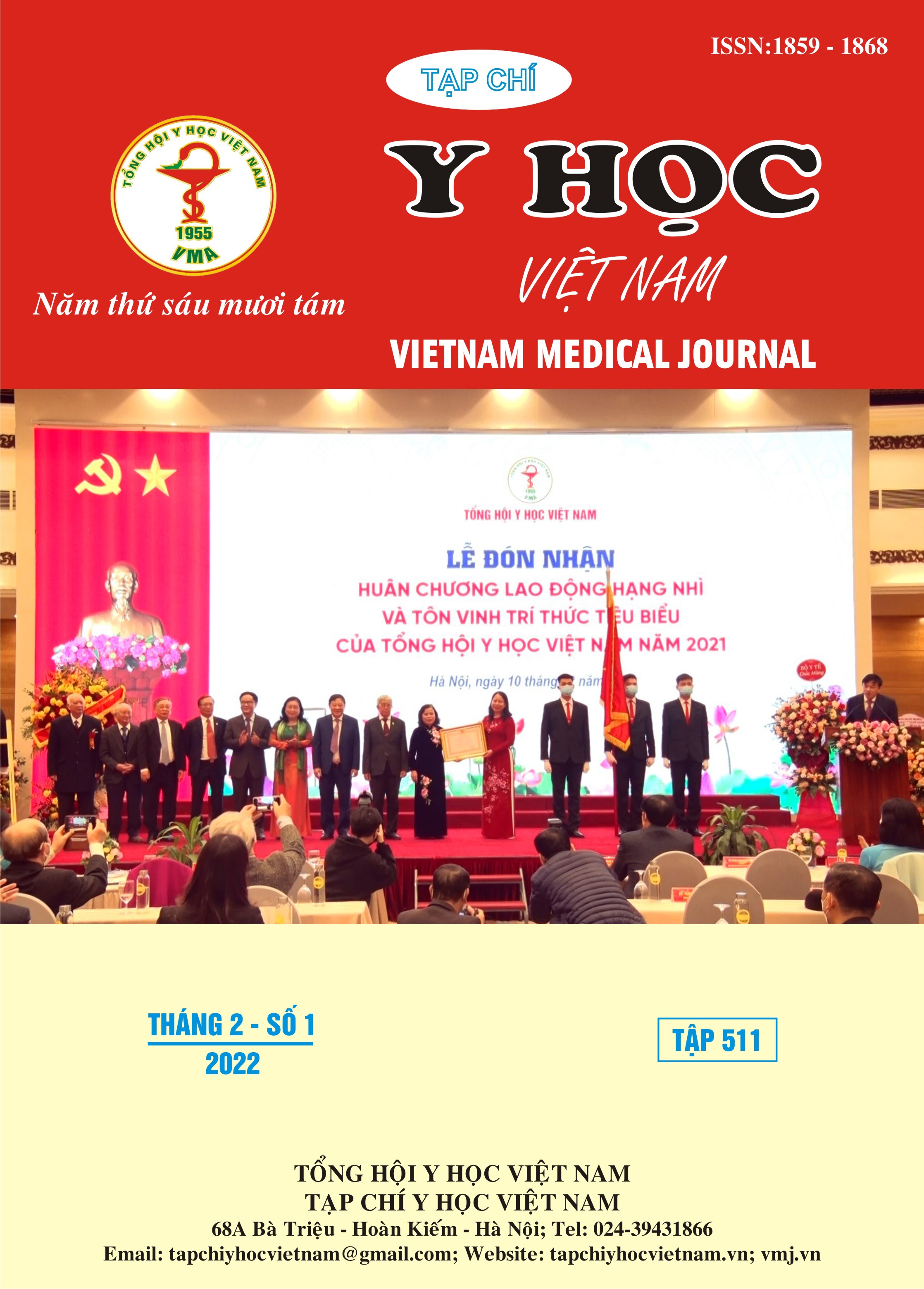RESEARCH ON THE RELATIONSHIP BETWEEN PULSE WAVE VELOCITY-PWV WITH SOME RISK FACTORS, SEVERITY OF CORONARY ARTERY LESIONS ASSESSED BY SYNTAX SCORE IN PATIENTS WITH CHRONIC ISCHEMIC HEART DISEASE
Main Article Content
Abstract
Objectives: To find out the relationship between PWV with some risk factors, severity of coronary artery lesions assessed by SYNTAX score in patients with chronic ischemic heart disease (CIHD). Subjects and methods: This cross-sectional study. The patient group included 60 patients with CIHD (defined as angiographic percent diameter stenosis ≥ 50%). The control group included 33 patients had normal coronary angiography, who underwent PWV measurement at Cardiovascular Center, 103 Military Hospital from November 2020 to April 2021. Results: The average age of the control group and the CIHD group was 67,05 ± 12,04 and 67,67±6,80, respectively. The mean PWV of CIHD group (15,90±1,49 m/s) was higher than control group (13,32±1,98 m/s), p<0,05. There were moderate correlations between PWV and SYNTAX score (r=0,477; p<0,05). The cut-off value of PWV to predict of coronary artery stenosis was 14,45 m/s, sensitivity of 86,0%, specificity 66,67%, p<0.05. Conclusion: The mean PWV of CIHD group was higher than control group. There were moderate correlations between PWV and SYNTAX score. The cut-off value of PWV to predict of coronary artery stenosis was 14,45 m/s.
Article Details
Keywords
Pulse Wave Velocity, Chronic Ischemic Heart Disease, SYNTAX score
References
2. Vlachopoulos C., Aznaouridis K., Terentes-Printzios D., et al. Prediction of cardiovascular events and all-cause mortality with brachial-ankle elasticity index: a systematic review and meta-analysis. Hypertension. 2012;60(2):556–562.
3. Nam H.J., Jung I.H., Kim J., et al (2012) Association between brachial-ankle pulse wave velocity and occult coronary artery disease detected by multi-detector computed tomography. International journal of cardiology, 157(2): 227-232.
4. Chung CM., Tseng Y., Lin YS., et al. (2015), "Association of brachial-ankle pulse wave velocity with atherosclerosis and presence of coronary artery disease in older patients", Clinical interventions in aging, 10, 1369.
5. Zhang F., Liu J., Huang W., et al. (2013), "Associations of SYNTAX score with serum homocysteine and brachial-ankle pulse wave velocity", Journal of Chinese Practical Diagnosis and Therapy, 2013, vol.2.
6. Sun S., Zhengjun Q.I., Shao X., et al. (2015), "Assessment value of brachial-ankle pulse wave velocity on severity of coronary disease in patients with coronary heart disease", Chinese Journal of cardiovascular Rehabilitation Medicine, 24(5), 512-515.
7. Kim HJ., Nam JS., Park JS., et al. Usefulness of brachial-ankle pulse wave velocity as a predictive marker of multiple coronary artery occlusive disease in Korean type 2 diabetes patients. Diabetes Res Clin Pract. 2009; 85(1):30–34.
8. Nam HJ., Jung IH., Kim J., et al. Association between brachial-ankle pulse wave velocity and occult coronary artery disease detected by multidetector computed tomography. Int J Cardiol. 2012;157(2):227–232.


